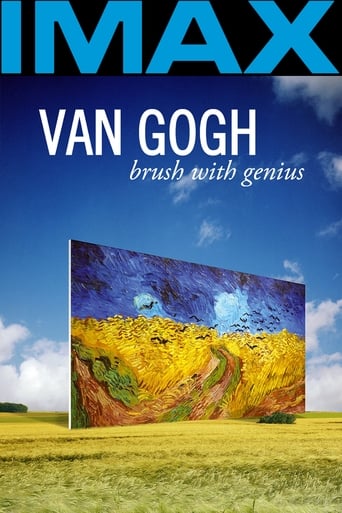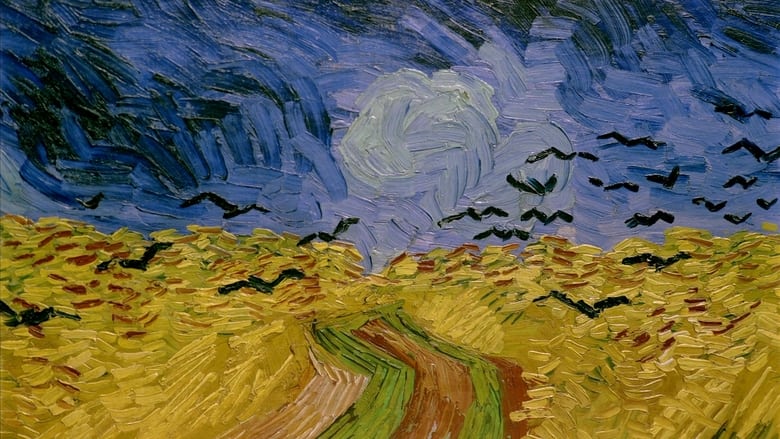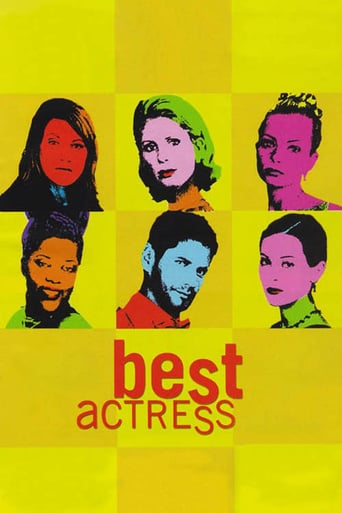

Van Gogh: Brush with Genius (2009)
An artistic view of Van Gogh as if this movie is self narrated by himself.
Watch Trailer
Cast
Similar titles

Reviews
A Masterpiece!
This is a small, humorous movie in some ways, but it has a huge heart. What a nice experience.
It's the kind of movie you'll want to see a second time with someone who hasn't seen it yet, to remember what it was like to watch it for the first time.
Although I seem to have had higher expectations than I thought, the movie is super entertaining.
I recently saw this IMAX movie, and although I did love the visual presentation of Van Gogh's works in IMAX (gorgeous!) - and for that reason alone, please do watch this film; the narration has problems.The heavily French-accented narration by the male character, posing as Van Gogh, was very distracting. I realize that Van Gogh was Dutch, and that while he spoke French when living in France so in real life he did have an accent - BUT this male narrator did not have a clear pronounciation of English words. And after all this movie is the release for English speaking audiences.I found myself straining to understand his speech so much, that it distracted my visual enjoyment of this movie. (The female French character (i.e., the scholar), who also speaks in this film does have clear understandable English, so it was okay listening to the female. Her voice was not distracting.) And like the other reviewer here, I too was wondering why they had the 3rd person, a male movie director, being shown so prominently within this film. The movie director's appearance in the film did not serve any purpose to further understanding Van Gogh.so, overall, go see this to enjoy the visual images of Van Gogh's works in IMAX; but don't expect too much from the narration content.
Seen in IMAX at the Melbourne Festival.Its hard to mess up any project that shows Van Gogh's work. So let's talk about why you need to see this. You must of course visit the man's paintings at least once. You need to spend at least two hours on each one, especially the post-Arles ones where the mania took control. But even in the best of settings, you can only get so close. There is a mystery to them, like there is with Shakespeare. His plays work amazingly well in performance and they were clearly designed for that. But they take on a whole new dimension when read and studied. So it is with Vincent's paintings. But it is virtually impossible to study them.Here you can get a feel for the energy in them because details can get blown up to 20 feet. There is a device that is used here that annoys, but is ever so useful: you see a painting from the side, while the focus is pulled from near to far in a line that advances over the texture. You can see the depth, the energy, the layers of color. You can see why his brushes had to be custom made. Why his paints were delivered thick and then unevenly thinned on the spot. Why his strokes resemble his handwriting. How you can see the fatigue in the energy at the end of the project. For merely the possibility of this, you must see this if you can.But otherwise it is an abomination. The rough form is that we have a filmmaker. He makes a film about him making this film. It is narrated by a faux Vincent who says that he really likes this filmmaker, that the filmmaker truly understands his work. This alone deserves corporal punishment. This, and a similar set of episodes about a woman scholar who probably is the filmmaker's girlfriend occupy probably a third of the film.Another third shows an amazing set of misunderstandings. We are taken to settings that are, or are like the ones that Vincent painted and shown them in relatively lovely Imax, with an annoying pan. The assumption is that seeing "the real thing" somehow informs knowledge of the paintings, or the man. The paintings have little to do with the location, and everything to do with the experience, about which we learn nothing. There is the device here of time-lapse shots of cities where there is the effect of motion in stillness and that is something. The paintings have a static peace in the large and a panicked yearning of motion in the small, something I guess like time-lapse. But its not connected, so is wasted. Merely a filler.Finally we are given some history of the man, nearly all wrong or misleading.We are not told of the influence of drugs. Vincent's introduction to absinthe in Paris by Lautrec because it enhances the yellow. And Vincent's fall into porphyry, the extent of which is controversial. But surely it is why he turned manic in such a visibly spiritual and golden way. We are not told that Gauguin was well into an opiate addition by the shared time in Arles (because of the purples) and that the two men argued constantly and violently. It is not mentioned that it is now considered likely that Gauguin injured the ear in a near- unconscious tussle. We are not told about the destructive influence of Theo's wife and that she lobbied to cut off Vincent's allowance, triggering the suicide. (She would become immensely wealthy through the paintings.)In fact, though the letters are mentioned and some of them partly read, we get none of the passion from Vincent and the intelligent, detailed, theoretical feedback on each painting from Theo. They were a powerful team and this is lost here.So, please try and ignore this disgusting filmmaker and his attempts at self-validation and his history. But do go for the texture of the work.Ted's Evaluation -- 2 of 3: Has some interesting elements.


